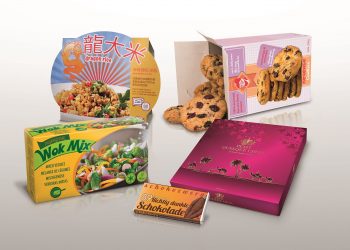Step into a supermarket and all you see around you are shoppers navigating crowded shopping aisles, picking up products to suit myriad requirements. The process of shopping may seem straightforward and hassle-free, however, in reality it is far from being simple. Consumer shopping and decision-making behaviours in fact operate at complex and subliminal levels, which in turn influence the kinds of brands and products that they are most likely to choose.
Typically, consumer shopping behaviour goes through instances, which are referred to as ‘Moments of Truth’. These moments of truth demonstrate the way consumers perceive the brand or product and the chances of them purchasing it.
While criss-crossing supermarket aisles, consumers take anywhere between 3 to 7 seconds to choose a particular brand over others. This miniscule time frame is very crucial because it is here that consumers may either choose to study the packaging and its contents or move on, before zeroing in on something else. This phase in the buying process is called the First Moment of Truth (FMOT) and is the consumer’s ‘a-ha moment’. If brands and marketers wish to captivate and compel shoppers it is necessary that they cash in on this ‘a-ha moment’.
For shoppers to easily identify products during the FMOT and proceed with a purchase, they need to be able to connect with the myriad brands and their alternatives that jostle for space on retail shelves. Part of the secret in connecting lies in the product’s packaging. Since shoppers always first shop with their eyes and then pick with their hands, packaging design can either make or break the chances of a product’s prospective purchase. Cornitos, the first Indian snack brand to introduce nacho chips in the country, effectively demonstrated how vibrant packaging is capable of grabbing attention. Competing with PepsiCo’s Lays, Cornitos differentiated themselves by sporting a new minimalist flat graphic style accentuated by bright-colours, bold fonts in addition to a distinctive matte finish for the packaging. By doing so, Cornitos cut through the ‘clutter’ and enabled shoppers to take notice, especially in those crucial first few seconds of browsing.
The First Moment of Truth is undeniably a very crucial phase in consumer shopping behaviour. But, even before consumers actually reach out for products on retail shelves, brands orchestrate a number of stimuli that in fact prompt consumers to seek out a particular product over others. Brands leverage the power of storytelling across multiple media such as the internet and television, to enable this. This is when consumers are believed to experience the Zero Moment of Truth (ZMOT).
Although ZMOT is a more recent concept than FMOT, it precedes the latter and involves consumers researching a product, prior to purchasing it. If the brand’s narrative convinces the consumer and is timed with his/ her intent of making a purchase, the chances of the product being picked become greater.
When Paperboat for example, launched its first ever multi-media campaign, they successfully established a strong connect with consumers even before people actually sought out the drinks. Bringing together a nostalgic, heart-warming narrative set around the popular ‘Malgudi Days’, scripted and recited by the legendary Gulzar, Paperboat got Indian consumers to identify with the brand, increasing its chances of being chosen over others, on retail shelves.
A considerable shift from traditional shopping forms to online shopping more recently, has emphasised the vital role of packaging design, even more than before. This has led to various packaging attributes such as structure, communication language, size, colour, etc. becoming a prime focus. Especially since online shoppers can only view a product and not touch it. Brands and manufacturers, therefore, need to create packaging that is both innovative and distinct, while continuing to seamlessly integrate both online and offline platforms. Brands need to engage consumers equally as they sift through retail shelves or surf through online portals.
When the brand tells a powerful story, wins at the Zero Moment of Truth and convinces the consumer to make a purchase, that is when half the battle is already won. As the packaging and its design successfully evoke a positive First Moment of Truth reaction from shoppers, it sets the ball rolling for the Second and Third Moments of Truth (SMOT and TMOT), both equally essential in building brand loyalty. This is when the consumer connects with the brand, buys it, uses it and finally becoming a real fan of it. This is when the consumer has truly arrived and becomes a living endorsement of the brand!Packaging’s Moments of Truth
Strategist, Researcher, Co-Founder at Therefore Design
Founding Partner at Therefore Design, a Strategic Design consultancy that works in synergy with businesses to identify opportunities and explore their potential through design.
Spearheading Research and Strategy at Therefore Design, where we harness the power of consumer and market insights to help businesses bridge the gap between brands and consumers while delivering higher value.
Her expertise lies in the convergence of business and brand strategy which strangely enough many a times are at odds with each other. Having a unique mix of experience that enables her to strike a balance between the pragmatic considerations of clients and design thinking approaches that results in innovative yet practical solutions.
Content Lead and and Budding Brand Strategist,
Therefore Design






